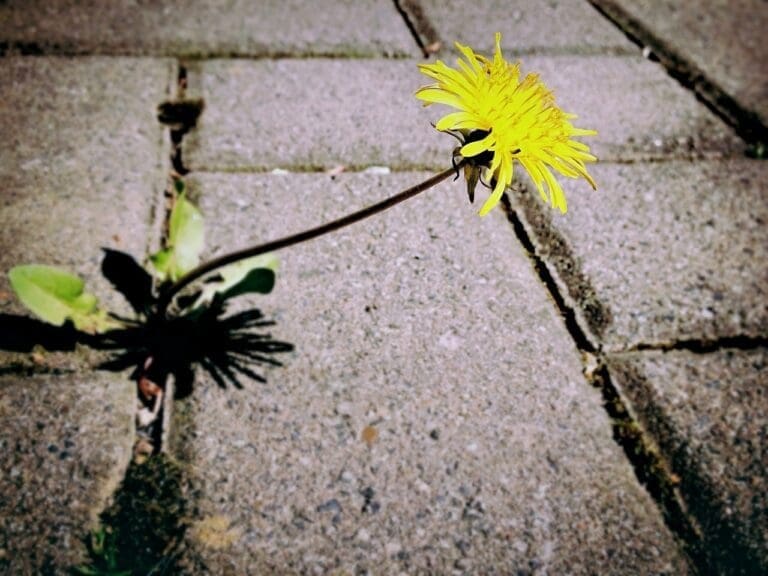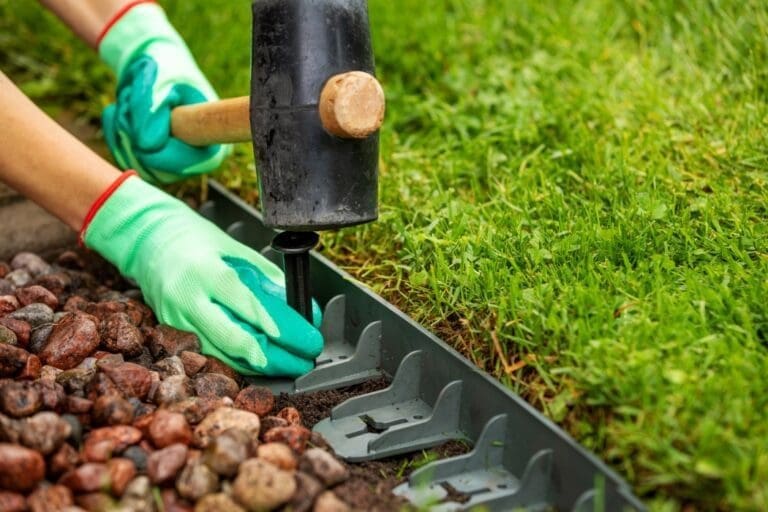Are you tired of weeds running rampant in your garden and stealing the limelight from your cherished plants? If your answer is yes, then you’re in the right place.
A weed, simply put, is an uninvited guest in your garden. It not only mars the beauty of your green haven but also wages a war against your plants, battling for nutrients, water, and light.
In this post, we are going to share seven effective strategies to control these pesky intruders without relying on harmful chemical weedkillers that can disrupt your garden’s fragile ecosystem.
Top Tip
Embrace the power of dense planting: by positioning your plants closer together, you limit the amount of sunlight, space, and resources available for weeds, helping to naturally suppress their growth.
This post contains affiliate links which means we may make commission from any qualifying sales with no extra cost to yourself.
7 Methods to Reduce Weeds Without Chemicals
- Apply A Generous Layer of Mulch
- Reduce Any Bare Soil
- Remove Weeds Before They Go to Seed
- Only Disturb the Top Layer of Soil
- Repair Cracks in Hard Landscaping
- Install Lawn Edging
- Use Landscape Fabric
Unearthing the Causes of Weed Infestation

Understanding the root causes (pun intended!) of weed growth can help you think strategically.
Bare or untended soil is a welcoming ground for weeds. Nutrient-rich, moist soil in particular becomes a hotbed for weed germination. Additionally, disrupting the soil through activities like digging or tilling can unwittingly give a wake-up call to dormant seeds, presenting them an opportunity to sprout.
The Importance of Going 'Green' Against Weeds
As the seasons of spring and summer unfurl, supermarket shelves overflow with chemical-based weed killers. These are often touted as magic solutions for those stubborn weeds invading your garden.
However, it’s important to remember that these chemicals can potentially wreak havoc on the environment and negatively impact your garden’s ecosystem.
So, let’s explore eco-friendlier ways to curb the onslaught of weeds.
1. Apply a Generous Layer of Mulch


Mulch, comprising organic matter like wood chips, leaves, or bark, is your garden’s best friend. It serves as a shield, blocking sunlight, thereby suppressing the germination and growth of weeds.
To be most effective, apply a thick layer of mulch, around 2-3 inches deep. As a bonus, mulch gradually decomposes, enriching soil structure and improving plant health and drainage. Sprucing up the appearance of garden beds is another aesthetic perk of mulching!
2. Reduce Any Bare Soil


Minimising bare soil in your garden is another way to discourage weeds. The simple rule is: the less exposed the soil, the fewer the chances of weed germination.
Dense planting is a smart way to reduce bare soil. Groundcover plants can serve as a ‘green mulch’, effectively blocking sunlight and suppressing weed growth. Remember, a filled-up garden not only reduces weeds but also looks fuller and more attractive!
3. Remove Weeds Before They Go to Seed


For weeds, prevention truly is better than cure. When weeds do emerge, it’s crucial to remove them before they have a chance to flower and spread their seeds.
Weeds are easiest to remove when they’re young and their roots aren’t deep-set. In the case of perennial weeds, make sure to remove as much of the root as possible to prevent recurrence.
4. Only Disturb the Top Layer Of Soil


Resist the temptation to dig deep into your garden soil. The more you disturb it, the more you invite dormant weed seeds to come to the surface and grow. Try to only disturb the top layer of soil when weeding.
A hoe can be an effective tool for this purpose. Embracing the ‘no-dig’ gardening approach can not only help reduce weed growth but also promote better soil structure and less water consumption.
For further insight into this method, consider reading “No Dig: Nurture Your Soil to Grow Better Veg with Less Effort” by Charles Dowding.
5. Repair Cracks in Hard Landscaping


Surprisingly, even the smallest cracks and crevices in hard landscaping can serve as cosy homes for weed seeds. Regularly inspect your patio, paving slabs, or any block paving for damage.
Filling in the gaps not only prevents weed growth but also enhances the safety and appearance of your outdoor space.
6. Install Lawn Edging


Installing lawn edging can create a clear boundary that stops weeds from infiltrating your lawn and grass from invading your garden beds or gravel borders.
There’s a wide array of edging options like metal, plastic, or stone. If you prefer a more natural look, consider using groundcover plants or small evergreens at the front of your garden beds.
7. Use Landscape Fabric
Landscape fabric can serve as a barrier against weed growth. Designed to allow water to pass through while blocking sunlight, this fabric can be a game-changer for weed control in your garden.
It’s affordable, easy to install, and can be camouflaged with bark or gravel for a more aesthetic look.
Your garden is a place of tranquillity and beauty, and with these seven eco-friendly strategies, you can help preserve it, ensuring it remains a haven for your beloved plants, not weeds! Happy gardening!
Frequently Asked Questions
Q: How do I stop weeds from growing between slabs?
Preventing weed growth between paving slabs can be a combination of several methods. Start by physically removing any existing weeds, making sure to get as much of the root as possible. Next, you can fill in the gaps between slabs with a polymeric sand or a sealant that hardens and prevents weed seeds from settling. Applying a natural weed killer, such as boiling water or vinegar, can also be effective. Finally, regular maintenance like sweeping can stop seeds from settling in the crevices.
Q: What kills weeds permanently and not grass?
Maintaining a thick, healthy lawn is the best method to keep weeds at bay, as dense grass leaves little room for weeds to establish. Regular feeding, watering, and mowing your lawn encourages grass growth and discourages weeds. If weeds do pop up, hand weeding is the safest method to remove them without harming your grass. There are also selective weed killers on the market that target weeds without harming lawn grasses, but as we’re focusing on non-chemical solutions, manual weeding or using a tool like a weed puller is the safest bet.
Q: How do I permanently get rid of weeds in my gravel driveway?
To keep weeds out of your gravel driveway, start by removing any existing weeds, again trying to get as much of the root as possible. Laying a high-quality landscape fabric underneath your gravel can prevent weeds from growing up from beneath. Applying a layer of coarse sand before adding the gravel can also prevent weed growth. Regularly raking the gravel can disturb any young weeds trying to get established and using a flame weeder can be a very effective, chemical-free way of killing any stubborn weeds.
Q: How long will vinegar keep weeds away?
Vinegar is a non-selective weed killer, meaning it’s not just the weeds that need to watch out. While it can effectively kill weeds, it doesn’t prevent them from growing back in the future. The effects of vinegar are pretty much immediate, and you should see the weeds start to wilt and die within 24 hours. However, vinegar does not kill the roots, so perennial weeds may regrow after treatment. Repeated applications might be necessary for tougher weeds. Also, remember that vinegar changes the pH of the soil, making it more acidic, so use it sparingly to avoid adverse effects on other plants.







